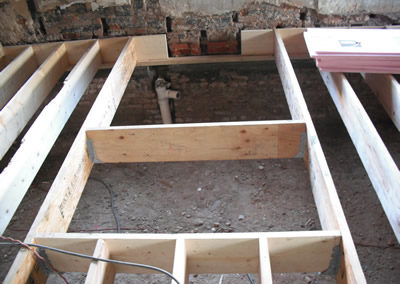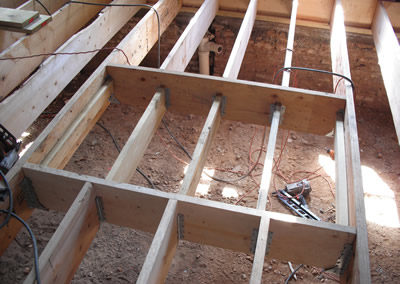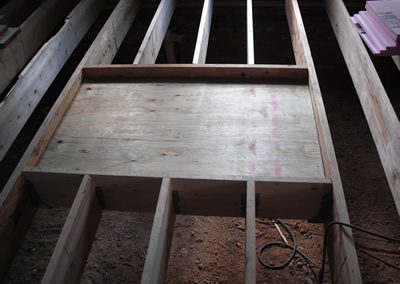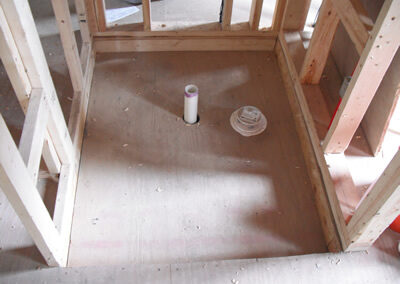Designing accessible master bathrooms on both the first and second floors at 753 was of particular importance to our clients as they have an elderly in-law who is confined to a wheelchair. Therefore, our design team recommended curb-less showers for both master bathrooms. One of the main concerns with a curb-less shower is controlling water flow and splashing. When designed correctly however, a shower without a curb can be just as efficient as your standard shower built with a curb.
Additionally, when designing and installing a curb-less shower, thorough planning from the beginning of the remodeling project is required. Coordinating between the trades is important, starting with the framing, as the subfloor under the shower must sit lower than the flooring throughout the rest of the bathroom. This can be complicated or even impossible when remodeling only a bathroom in a home where the existing structures and systems are not being altered. When this is the case, one option is to raise the bathroom floor around the shower pan. This can create other problems though, as there will be a change in floor level at the door of the bathroom, which has to be fixed with some kind of ramp or step. At 753 however, this was not a problem as we were able to frame for the recessed shower pan when we were reworking the floor joists. (See pictures below.)
Once the plumbing rough-ins were complete and concrete backer board installed (covered in previous posts: Plumbing Rough-ins and Tile Backer Board), we were ready to pour our shower pan. Since the showers in the master bathrooms are relatively big (floors are approximately 12 square feet), we had the ability to make our entrance ramp into the shower long and gradual, without running the risk of water flowing out onto the bathroom floor.



